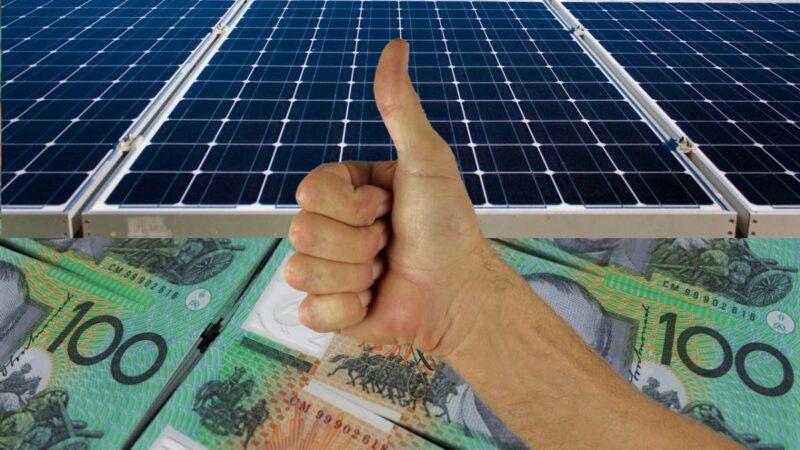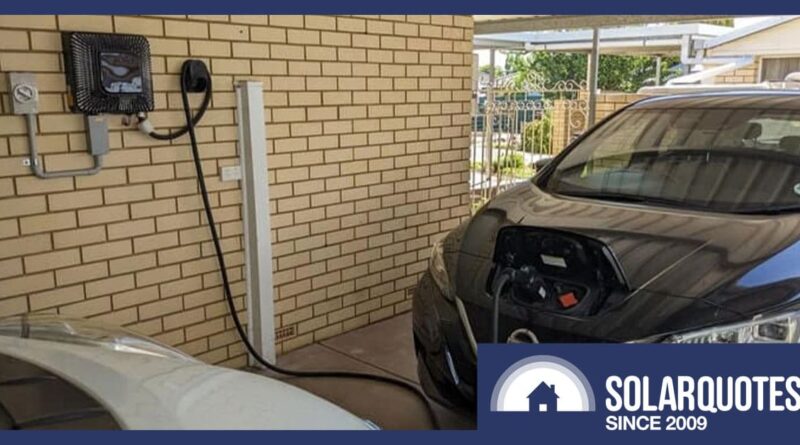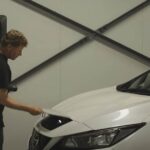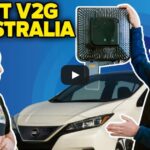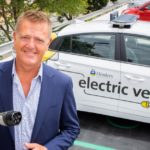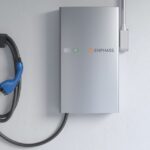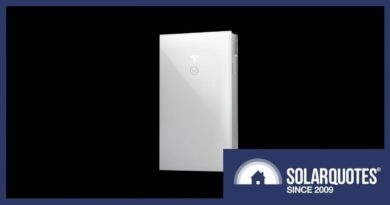Aussie V2G Pioneer: Nissan Leaf Is Rubbish But V2G Is Great
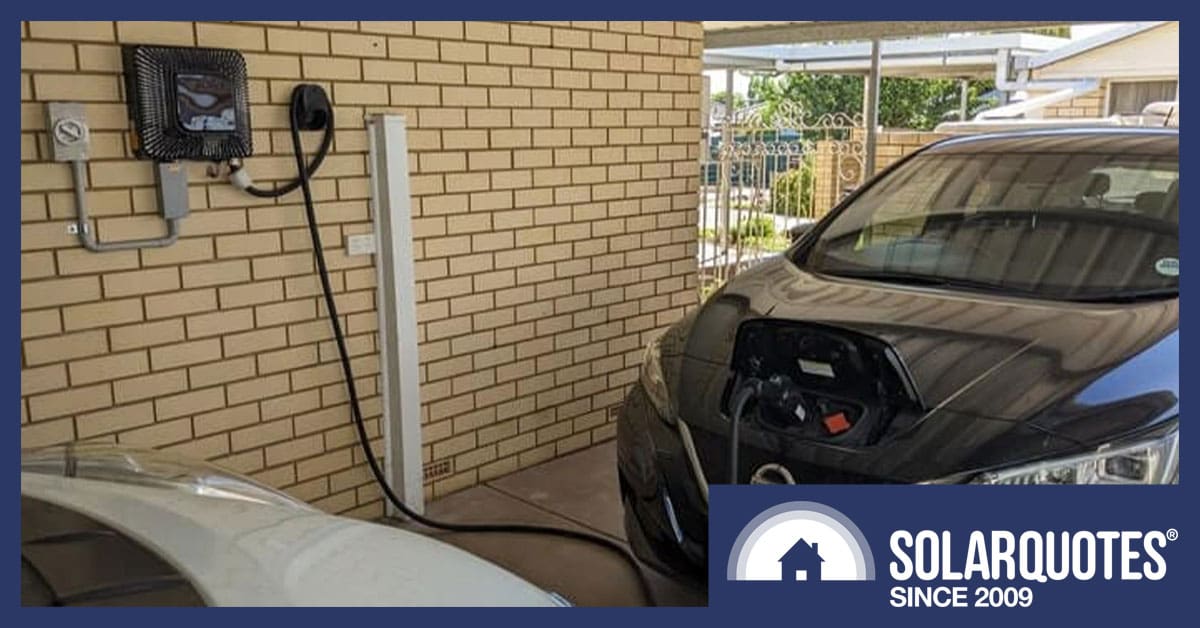
Jai Nankivell is one of a handful of Australians with a legally installed home Vehicle to Grid (V2G) installation which works with his V2G compatible electric car to feed electricity back into the grid when it is profitable for Jai to do so.
Before readers get too excited V2G is currently only legal in South Australia, the bi-directional EV charger Jai has isn’t sold anymore (when it did the cost was well over $10000) and hardly any electric cars sold in Australia are V2G compatible.
That said Jai has many interesting insights to offer including how using V2G has improved his health in an unexpected way and maximising V2G profit requires skills similar to a energy markets trader.
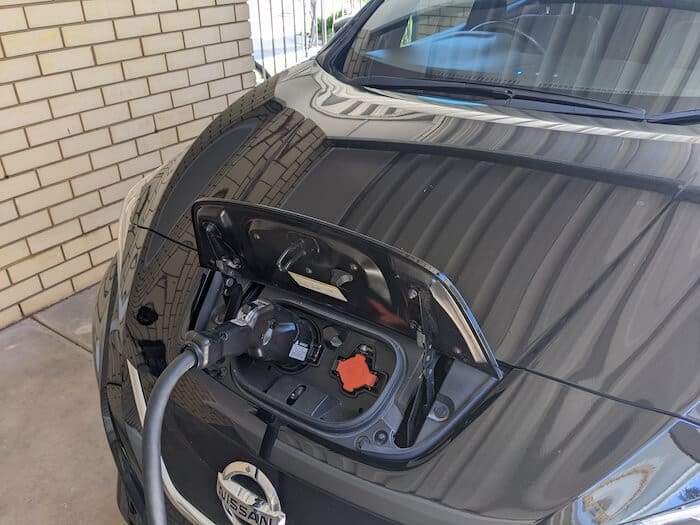
— Interview begins:
Imported Nissan Leaf Owner Experience
Neerav: We’re having a chat with Adelaide resident Jai Nankivell about his experience owning a 2018 Nissan Leaf ZE1 e+ (62kWh) and using it with a bi-directional Wallbox Quasar V2G charger.
Jai could you please share, was your electric car bought or leased?
Jai: It was purchased second hand from Good Car Co. The process was very easy but took a while due to Covid delays.
I chose the Japanese version of the Leaf because it has a lane keep assist that the Australian variant doesn’t and optional one-pedal driving which makes driving in heavy traffic easier. Nissan has removed this feature from their latest EV, the Ariya.
I was able to install a Comma 3X (from Comma AI) to upgrade the car to level 2 self driving (hands off, but eyes on and ready to take over at all times). The steering assist is near perfect on the highways. It feels like having cruise control for the first time all over again.
The “self driving” is not quite adequate on back streets yet. It won’t run into any parked cars (it would last year on an older software version), but it still doesn’t navigate unusual situations like roundabouts or single lane roads with an oncoming car.
The Comma is an amazing assist that helps take some stress out of driving. I won’t be buying another car unless it’s compatible with the Comma.
Nissan Leaf ZE1 Frustrations
Neerav: Would you buy or lease this brand of electric car again and recommend it to others?
Jai: No. I would gladly buy another ZE0 Leaf (AKA Gen1: 2012-2015), but never a ZE1 (AKA Gen2) Leaf. No-one should ever buy a ZE1 Leaf unless they already have a CHAdeMO V2G charger and aren’t planning to drive the car.
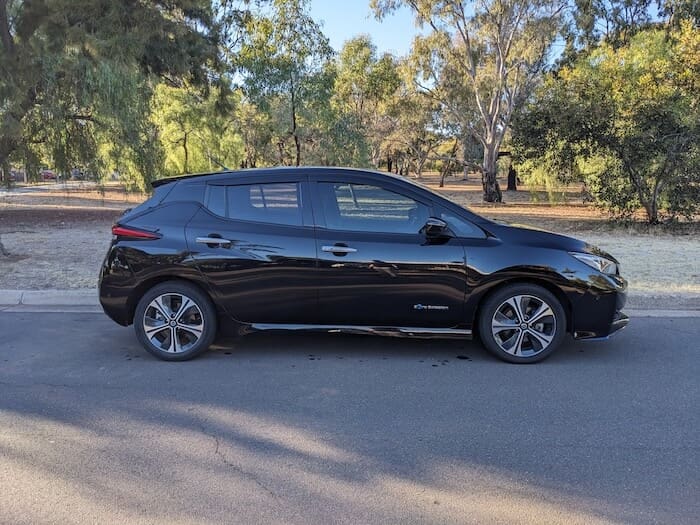
Don’t buy a new Leaf. The battery overheating is noticeable after about 600km. If you drive on long trips, most new EVs are cheaper and better than a new Leaf. If not, an older Leaf will probably do.
Driving at 90km/h is significantly better for the battery temperature than 110km/h. This is both due to the reduced power requirement while driving, and the reduced energy needed to recharge at each stop.
There is a complete lack of battery cooling (not even a fan for air cooling). The battery overheats if rapid charged 3 times in a day. The third charge of the day is very slow.
I generally seek out the slowest DC chargers on long road trips to reduce battery overheating during charging. I have recently been avoiding EVIE due to their recent $30 precharge policy, and the lack of information on the app while charging.
If there was a company that accepted credit/debit card to start and didn’t require an app, I would exclusively use that company’s chargers. I hate being forced to use an app (RFID card doesn’t count because it still needs to be linked to the app).
Nissan will not touch an imported car, and often won’t touch an electric car they just sold either. No warranty (from Nissan) or any kind of repairs. I have replaced the air-conditioner filter myself.
All of the storage spaces in the new Leaf (ZE1) have been made much smaller than the older (ZE0) Leaf. I found it difficult to find a place to put a small tissue box.
The turning circle is noticeably larger than the ZE0. The handling is significantly worse than the ZE0. The ZE0 handles corners like a racing car, where the ZE1 feels like an SUV.
Front wheel drive means the car is traction limited when accelerating below 80km/h. The traction control system is very conservative, and will limit the torque to well below the traction limit if the wheels slip even slightly. I’m not brave enough to turn off traction control on a public road.
Hitting a small bump while braking will disable regen for a few seconds. This means that a long, steep, slightly bumpy road will cause the car to use friction brakes the entire way down, resulting in hot brakes and no added charge to the battery.
The CHAdeMO port is no longer standard in Australia, and not all rapid chargers have a CHAdeMO cable. Most (all?) new V2G chargers are CCS only, making the Leaf incompatible with V2G. CCS to CHAdeMO adapters are expensive, rare, and don’t work on all EV chargers.
The Japanese imported variant of the Leaf has a Type 1 (J1772) port. Fortunately Type 2 to Type 1 cables and adaptors are available. Cables and adaptors are different, and both are required for full compatibility.
Nissan removed the 80% battery limiter from the Leaf around 2016. This means either faster battery degradation, or having to do maths every time the car is plugged in to work out when to unplug the car to protect the battery.
The Nissan connect app (formerly Car Wings) doesn’t work in Australia, and barely worked in other countries.
The front axle has a click sound when accelerating or braking. This has been a known issue on Nissan vehicles at least 10 years before the Leaf was produced. There is no permanent fix.
Leaf Redeems Itself With V2G
Neerav: How do you regularly charge your car for day to day usage?
Jai: I leave it plugged in to my Wallbox Quasar V2G charger. Charge from solar when available. Charge from the grid if the daytime purchase price is significantly lower than the evening sell price. Run the house and discharge to the grid in the evening, overnight, and during price spikes.
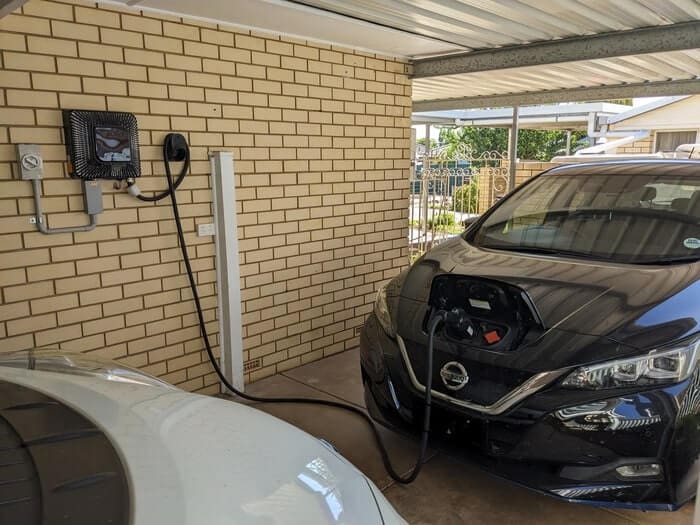
Neerav: Has your investment in V2G technology been worth it?
Jai: V2G has been a game changer when combined with wholesale pricing. I’ve been making around $2-4 per day on an average day, and occasionally over $100 during a price spike (2-3 times per year).
My day to day normal charging experience has been complicated. I’ve been writing my own automations to more accurately control charging and discharging to maximise profit and move as much renewable energy as possible to peak demand times.
I have never had an issue with the car running out of charge because I’ve been powering the house overnight.
The car battery is around 5 times the size of my house battery, and can power the house for close to 2 days of normal use (ignoring any solar produced). In addition, I have a minimum limit set in the charger, so the car will never go completely flat.
I’ve noticed no battery degradation from V2G use, but my example is only anecdotal. A research paper has shown that V2X loads have minimal to no impact on battery life. V2X loads are typically less than 10kW, whereas the battery can be required to output well over 100kW while driving.
It’s disappointing that the company (Wallbox) making the only approved V2G charger decided to stop production of it.
Neerav: Wallbox advises that:
“Wallbox firmly believes that bidirectional charging is key in supporting the transition to a more sustainable use of energy. The market has matured rapidly since the launch of Quasar (1) in 2020. At the moment the industry is seeing a shift towards CCS standards. As Wallbox is committed to offering the market with products that will not only solve problems today, but support the transition to more sustainable energy use long term, Wallbox has made a strategic decision to focus their efforts on Quasar 2, which will offer even greater benefits to users, such as islanding mode“.
V2G Lessons Learnt
Neerav: Do you have any other comments about your V2G experience Jai?
Jai: Since I got the V2G charger I have been cycling a lot more and been healthier. There is now a downside to not leaving the car plugged in at home, so I’ve been realising that I don’t actually need to drive for most trips.
Neerav: Jai makes a great point here which may seem obvious but to make the most of V2G your EV has to be plugged into your house a lot of the day and night.
Just plugging your EV into your house via V2G overnight will help your electricity bill a bit but for maximum impact the car needs to be plugged during the day as well to soak up excess solar generation.
— Interview ends:
Related: Finn has also previously written about the first bi-directional charger install on a residential or commercial property in Australia at Ballycroft Wines located in the Barossa Valley region of South Australia.
Original Source: https://www.solarquotes.com.au/blog/aussie-v2g-pioneer/
